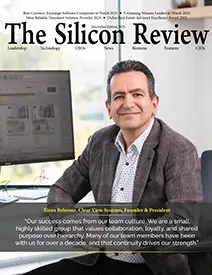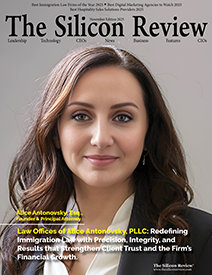>>
Technology>>
Cyber security>>
Cybersecurity Region-Specific ...Cybersecurity Region-Specific Security and Compliance
The Silicon Review
22 September, 2024
-Elaine Parker
Here's a deeper dive into the significance of region-specific security and compliance and how Ishu Bhatt's expertise can make a vital difference for organizations navigating this complex landscape.
The Importance of Compliance
1. Legal Requirements Different regions have specific laws and regulations that organizations must follow. Non-compliance can lead to significant legal repercussions, including fines, lawsuits, and reputational damage.
2. Data Protection: In an age of increasingly common data breaches, protecting sensitive information is paramount. Compliance frameworks often incorporate best practices for data security, helping organizations mitigate risks.
3. Trust and Reputation: Customers are likelier to engage with companies committed to compliance and security. Adhering to regional regulations fosters trust and enhances a company's reputation.
Region Specific Security and Compliance Framework
1. C5 Cloud Computing Compliance Controls Catalog) This German compliance standard provides guidelines for cloud service providers, focusing on transparency and security. Organizations using cloud services must comply with these standards to ensure data protection and operational integrity.
2. ISMAP (Information Security Management and Assessment Program) is a Japanese framework that focuses on assessing information security practices in cloud services. Organizations must comply with ISMAP to align with government cybersecurity expectations, which is crucial for public sector contracts.
3. Spain's ENS (National Security Scheme): This framework outlines the requirements for information security in public sector entities. Compliance is necessary for organizations that deal with government data, ensuring the protection of sensitive information.
4. EU Code of Conduct (EU COC): This framework provides guidelines for data processors operating in the European Union, particularly regarding the GDPR. Compliance with the EU COC demonstrates a commitment to data protection and can help organizations build stronger customer relationships.
5. IRAP (Information Security Registered Assessors Program): This Australian initiative helps organizations assess their compliance with the government's security framework. It is particularly relevant for businesses that handle sensitive government data.
![]()
Achieving compliance with various regional standards, such as C5, ISMAP, Spanish ENS, EU COC, and IRAP, using a Cloud Compliance Framework (CCF) involves a strategic approach.
Here are some steps to consider:
1. Understand the Standards: Familiarize yourself with the requirements and objectives of each compliance framework. Each standard has specific controls, processes, and documentation requirements.
2. Gap Analysis: Conduct a gap analysis to identify where your current practices align with each standard's compliance requirements. This helps pinpoint areas that need improvement.
3. Mapping Controls: Utilize the CCF to map your existing controls to the specific requirements of each compliance framework. This can help streamline efforts by identifying overlapping controls.
4. Automation and Monitoring: Leverage automation tools within the CCF for continuous monitoring and reporting. This can help maintain compliance by providing real-time insights into the effectiveness of the controls.
5. Regular Audits and Assessments: Schedule regular audits and assessments to evaluate compliance with the frameworks. This will help in identifying any new gaps and ensuring ongoing adherence to the standards.
6. Documentation and Reporting: Maintain thorough documentation of compliance efforts, controls in place, and audit results. This documentation will be crucial during external audits or assessments.
7. Engage with Compliance Experts: If necessary, consult with compliance experts or legal advisors who specialize in the specific frameworks to ensure that all aspects are covered.
8. Continuous Improvement: Compliance is an ongoing process. Regularly review and update your compliance strategies to adapt to any changes in the frameworks or in your organization.
_2025-12-15_12-44-58.webp)


_2025-11-17_06-38-14.webp)

 (1)_2025-10-21_13-35-14.webp)
